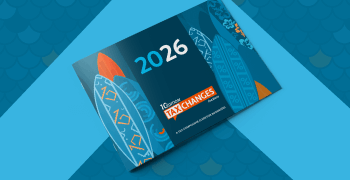A call for national sales tax – Wacky Tax Wednesday
The Fair Tax Act of 2017, introduced last week by Sen. Jerry Moran (R-Kansas), seeks to “promote freedom, fairness, and economic opportunity by repealing the income tax and other taxes, abolishing the Internal Revenue Service, and enacting a national sales tax to be administered primarily by the States.” Gone would be the existing income and corporate income taxes, employment and self-employment taxes, and estate and gift taxes. In their place: a national sales tax, with an initial rate of 23% percent.
Supposed advantages of the Fair Tax Act
According to the bill, there’s no shortage of reasons to abolish the federal income tax. Section 2 of the proposed Fair Tax Act states that Congress finds the federal income tax to:
- Retard economic growth and reduce the standard of living
- Lower productivity and impede the international competitiveness of U.S. industry
- Reduce savings and investment
- Retard wage increases and impede upward social mobility
On top of that, the measure calls it unfair and inequitable. Similar grievances are provided for the other taxes Sen. Moran seeks to abolish.
A national sales tax, on the other hand, has many perks — say the authors of the bill. The measure states that it would:
- Promote savings and investment
- Promote economic growth and increase investment
- Enhance productivity and international competitiveness
- Reduce administrative burdens
- Raise the standard of living and improve upward social mobility
- Promote fairness
The bill proposes to “tax all consumption of goods and services in the United States once, without exception, but only once.” Intangible and used property would be excluded from the tax. Qualifying families, those living below the monthly poverty level, would be eligible for a monthly sales tax rebate.
Initially, the national sales tax would be 23 percent. In subsequent years, the rate would be “the combined Federal tax rate percentage of the gross payments for the taxable property or service.” To help offset administrative costs, an administering state would be entitled to “retain an administration fee equal to one-quarter of 1 percent of the amounts otherwise require to be remitted to the United States.”
The bill proposes a start date of 2019. Come Fiscal Year 2021, funding for the IRS would cease.
Senator Moran may just be making a point, but this isn’t the first time he’s proposed a national sales tax and the abolishment of federal income taxes. He took to the stump for his Fair Tax plan in 2015 and again in 2016. The idea has some support in Congress, and in late 2015, Moran listed Donald Trump as one of the GOP presidential candidates “supporting or willing to consider the ‘Fair Tax’ plan” (Kansas.com). The president favors tax reform and has called for a simpler tax code, including doing away with income tax for many Americans.
Supposed disadvantages of the Fair Tax Act
But is the country ready for such a change? Opponents of a national sales tax remind that sales tax is by nature a regressive tax, hitting people with lower incomes the hardest. In addition, a national sales tax would likely spur sales tax evasion. When a national sales tax was proposed in 1998, the Brookings Institute said, “When examined closely, the simplicity breaks down, payments would be close to impossible to collect, and the tax’s fairness would be, at best, questionable.”
There are also a number of potential compliance challenges for states. They would need to adjust existing or create new mechanisms to administer a federal sales tax. They would also need to decide what to do with their personal and corporate income taxes. Sen. Moran’s legislation presumes that a 23% tax rate will generate enough tax to replace the federal income taxes. What isn’t said is how high state rates would have to be to replace their personal and corporate income taxes. These state taxes are relatively easy for states to administer because of the reporting requirements found in the corresponding federal taxes. Without those federal reporting requirements, it would likely be difficult for states to administer state corporate and individual income taxes.
The final section of the Fair Tax Act seems uncertain about itself; it provides for a sunset of the national sales tax if the Sixteenth Amendment to the Constitution of the United States is not repealed within a certain time frame.
2017 promises to be an interesting year for tax news. Don’t miss any of it. Avalara’s free, monthly newsletter helps you stay on top of all things sales tax. Get it here.

Avalara Tax Changes 2026 is here
The 10th edition of our annual report engagingly breaks down key policies related to sales tax, tariffs, and VAT.
Stay up to date
Sign up for our free newsletter and stay up to date with the latest tax news.














